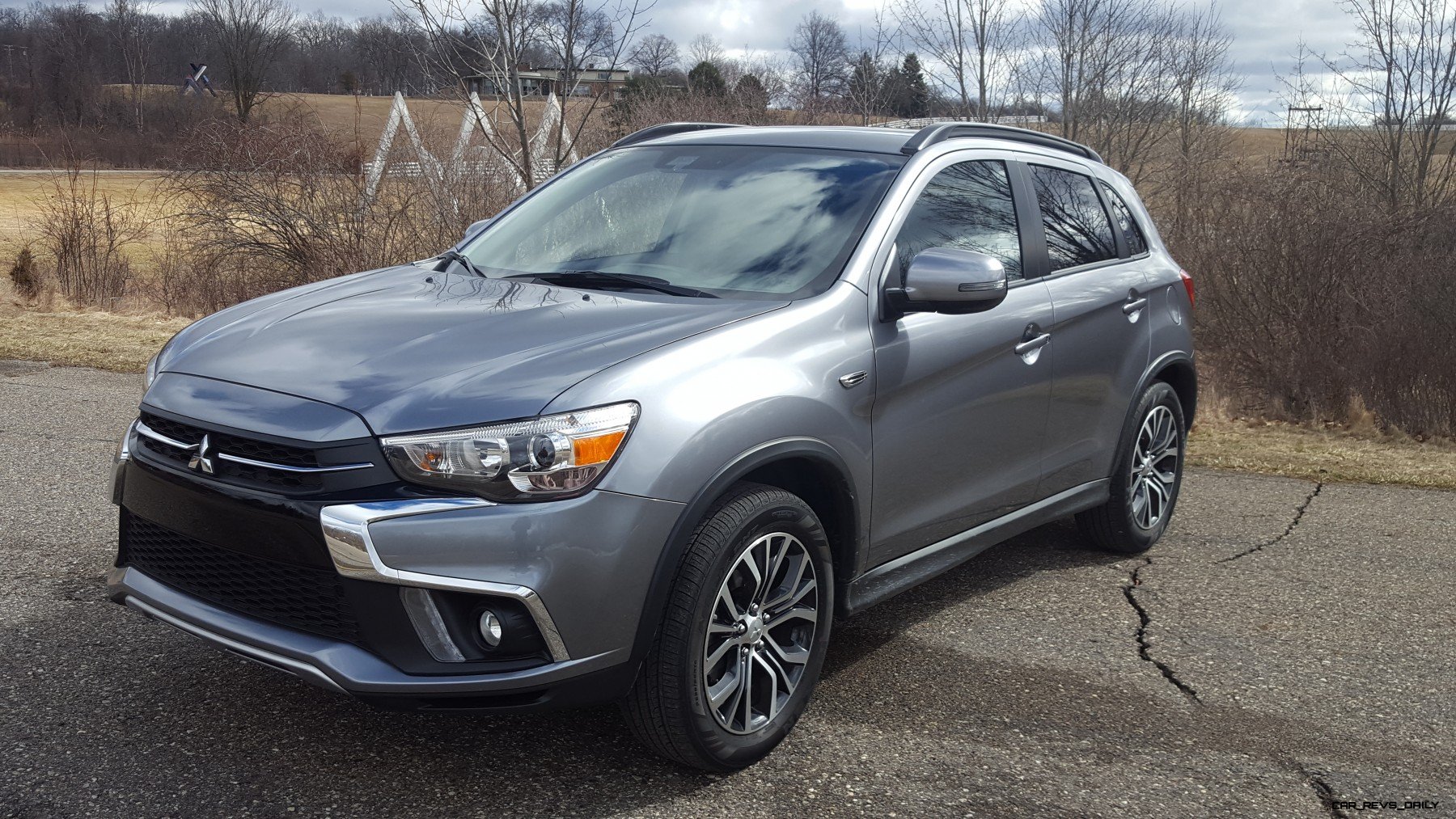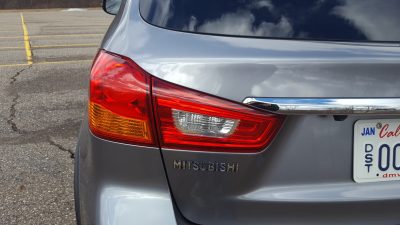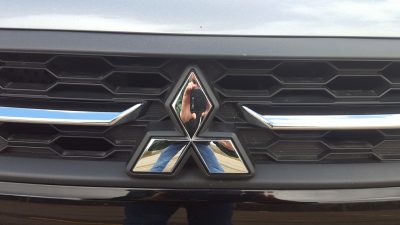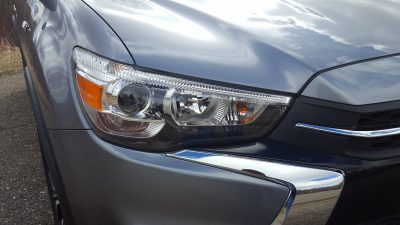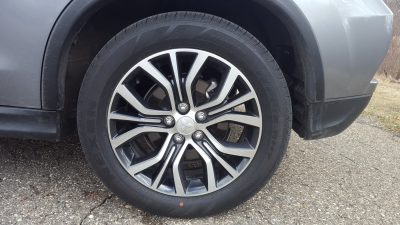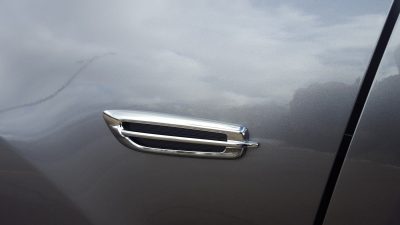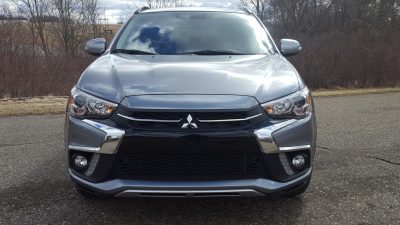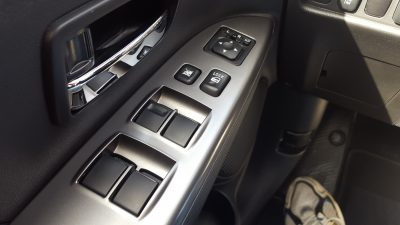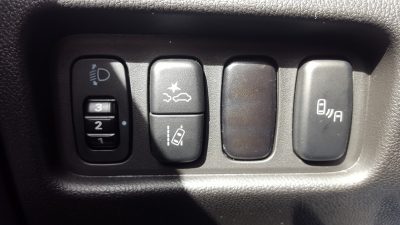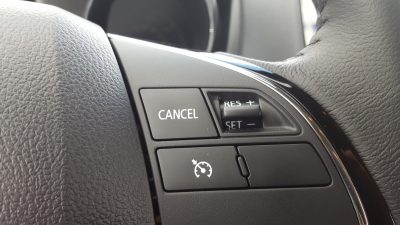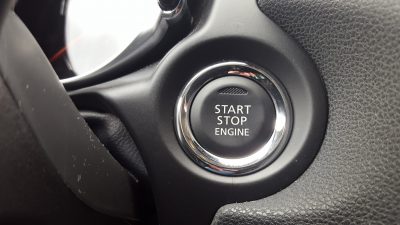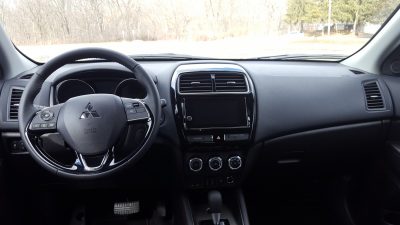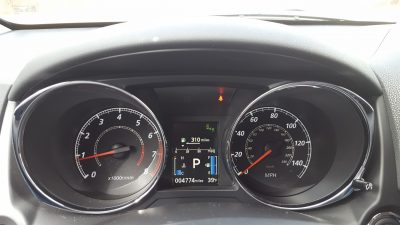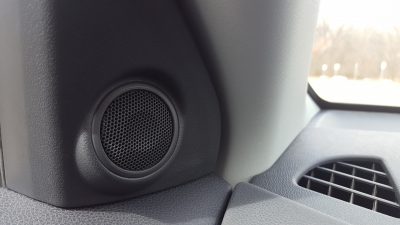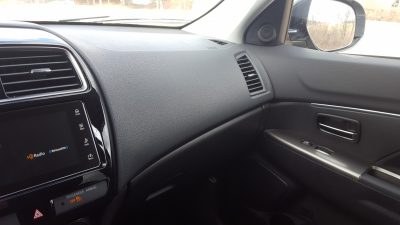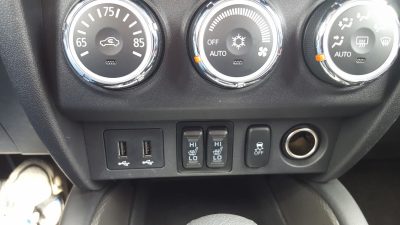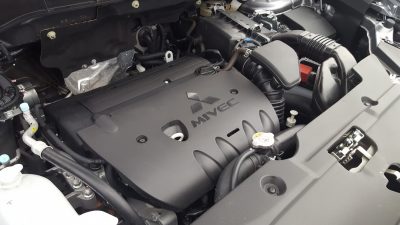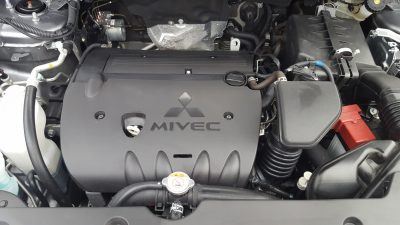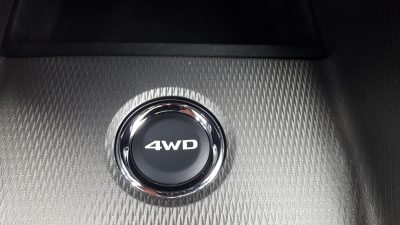With all the various iterations of Outlander that have visited the Metro Detroit branch over the years, the one elusive model that always managed to remain elusive to our scrutiny was its cousin, the Outlander Sport. Wheras the standard Outlander excels at being a family hauler and delivering outright insane fuel mileage when properly equipped, the Sport aims to wrap the efficiency in a decidedly more exciting package that also aims to add some driving fun to the overall driving experience. But can the 2019 Mitsubishi Outlander Sport still shine in a slice of the segment where fun and efficiency must exist as one cohesive unit? or is there still some room for improvement?
Breaking The Streak:
When our Mercury Gray Metallic GT grade tester arrived at the office, it managed to record one minor but still very significant milestone. It arrived just in time to serve as our mode of transportation to the annual 2019 Shutocon anime and videogame convention in Lansing, Michigan, where it proceeded to snap a two year long streak held by Toyota in regards to attending this annual pilgrimage. Like the CH-R that proceeded it, the Outlander Sport embraces a bold suit of clothes that trades the standard Outlander’s more functional design for a more cohesive and visually stimulating aesthetic. There are subtle references to the long departed Lancer sedan in the front fascia, with a small front grille, an aggressive lower front bumper, and slick headlights. While the lights themselves do not quite match the aggression wielded by the design focused Eclipse Cross CUV, they still make a strong case for themselves, and look even cooler at night. Sadly, night time visibility was a bit lacking, with the standard halogen lamps not having enough brightness to pick up objects further away (like an errant deer that appeared during our tester’s final day at the office.) The side profile is very clean, and it leads out to the stubby rear end. The taillights here embody more aggression than some of its drabber rivals, and we are glad that the company’s designers still know how to have fun, despite Mitsubishi eliminating their formal performance models in a quest for better fuel economy several years ago.
When it comes to how the model fares against its rivals, the styling does look sportier than the 2019 Ford Escape, (the 2020 model looks to rectify this) and the recently launched Nissan Kicks. The Mitsubishi does lose ground to other contenders, including the more rugged looking but still very car like Subaru Crosstrek, as well as the more technically polished Kia Sportage.
Budget Focused Cabin Mixes Comfort and Capability:
The interior of our tester is not the most luxurious of places to spend time in, but its still relatively comfortable, with supportive front bucket seats delivering commendable amounts of back support. While there are some cheap plastics scattered about, the fabric trim elements do look good, and they also feel good to boot, with none of the cheap mouse fur that defines other budget oriented crossover entries. Our tester also featured Mitsubishi’s current gen infotainment system, and while the lack of formal navigation did irk us, the system is compatible with Android Auto and Apple CarPlay which solves this minor problem. Second row occupants also have good amounts of room, but taller occupants may have issues with the tight headroom that the more aggressive roofline creates.
While the base model fits the budget mantra right down to the letter (for better or for worse,) Stepping up to a GT version like our tester brings some welcome equipment to buyers. They include heated front seats, a leather wrapped steering wheel with telescoping capability, a leather wrapped shift knob, as well as the fore-mentioned 7.0 inch infotainment system, which is paired to a robust six speaker audio system. On that front, the sound system did a good job with most kinds of music, but we did notice that some higher notes sounded a bit tinny, especially when tasked with playing various selections of Bach and Beethoven.
When it comes to hauling cargo, our tester managed to do a good job in this regard too. There’s 21.7 cubic feet of space with the seats up, which is enough for many common trips including weekly runs to the grocery store. However, for bigger items (including me and Emily’s Shutocon luggage) the rear seats fold down to produce 49.5 cubic feet of available space. A low load floor as well as a wide liftgate help make loading heavy or bulky items easier, which is welcoming for young families that will use the Outlander Sport as a vacation hauler.
Sport In Name Only:
When we saw the word ‘Sport” in the Outlander Sport’s name designation, we expected our tester to deliver a good driving experience. Sadly, it proved to be somewhat of a mixed bag. Part of this is due to the noisy 2.4 liter four cylinder engine, which lacks the refinement that defines other four cylinder SUV entries. While the 164 horsepower on tap is a notable improvement over the anemic 148 horsepower offered by the base 2.0 liter four cylinder engine, there is not alot of low end torque, and the engine forces drivers to go to the higher regions of the rpm range to access the small powerband. While this tendency does not show itself in city driving, it rears its ugly head in freeway driving, with the engine preferring to take its time in passing maneuvers as well shooting down freeway on-ramps.
The other culprit is the CVT that the engine is mated to, with the unit being intrusively noisy when tasked with acceleration. Alot of this noise makes its way into the cabin, and it compounds the fact that this transmission simply does not do a very good job of working with the 2.4 liter’s character. Things eventually quiet down once the Outlander reaches a solid cruising speed, but every time you mash the gas pedal, the Outlander Sport lets you know that it is giving everything it has to make the job done. In an age where turbocharged four cylinders give SUV drivers more confidence in freeway driving, the naturally aspirated 2.4 liter’s inability to do so really made us wish that Mitsubishi will eventually put in a similar offering for the Sport, since we believe that it will really improve the Outlander Sport’s driving demeanor long term.
Thankfully despite the evident flaws that exist in the driving experience, there were some good attributes that we came to like during our tester’s stay with us. Ride quality for example was very smooth and composed, with many divots and holes being muted, though larger road distrubances do make themselves known. It’s not a pillowy ride like some luxury oriented SUVs, but what’s present should still please customers. Fuel economy (a top prioirity for the company in recent years) is also in abundance, with GT models like our tester capable of achieving 28 mpg on the freeway and an equally impressive 23 mpg in the city. Whe looked at alongside the 25 mpg combined rating, these figures should please fuel conscious buyers, and they are also higher than some of its rivals in the segment including the Kia Sportage and the Jeep Compass.
Lastly, our tester also arrived with Mitsu’s All-Wheel Control system (AWC) and look for this trick all-wheel drive system to help the Outlander Sport handle sloppier terrain especially rain soaked back roads and even sections of the country where snow (and the snow covered roads that accompany it) are common during certain times of the year.
Value Quotient:
As expected from a Mitsubishi product, a solid foundation of value underpins the Outlander Sport’s sales pitch, with base 2.0 liter models starting at $20,945, with the range topping GT raising the price of admission to just over $26,000. If you choose to opt for the Limited Edtion model, buyers are forced into a separate build configurator when going through Mitsubishi’s main website, but the base model still retains its $20,945 asking price and can even be equipped with a decidedly old-school but much appreciated 5-speed manual gearbox ( a rarity in a segment where the manual has gone virtually extinct.)
The 2,4 liter GT LE is a CVT only affair, but it still has a budget friendly base price of $25,545, with AWC models like our tester boasting a slightly higher $26,545. Our lightly optioned non LE tester had a final sticker price of $27,865, which was mainly due to its $995 destination fee versus its two formal pieces of optional equipment an accessory tonneau cover and carpet floor mats. This pricing allows it to hang tough with segment benchmarks, but like its bigger corporate cousin, the Sport is missing some key equipment and technology to truly allow it to punch above its weight class.
Overall we like what we see with the 2019 Mitsubishi Outlander Sport GT. It is not a true jack of all trades like some of its rivals, but what it does have at its disposal still allows it to be a very unique entry in the SUV segment, and we hope that the recent tie up with Nissan will allow some much needed life to be pumped into the Sport especially in regards to powertrain technology and interior refinement.

Carl Malek has been an automotive journalist for over 10 years. First starting out as a freelance photographer before making the transition to writing during college, his work has appeared on numerous automotive forums as well as websites such as Autoshopper.com.
Carl is also a big fan of British vehicles with the bulk of his devotion going to the Morgan Motor Company as well as offerings from Lotus, MG, and Caterham. When he is not writing about automobiles, Carl enjoys spending time with his family and friends in the Metro Detroit area, as well as spending time with his adorable pets.

